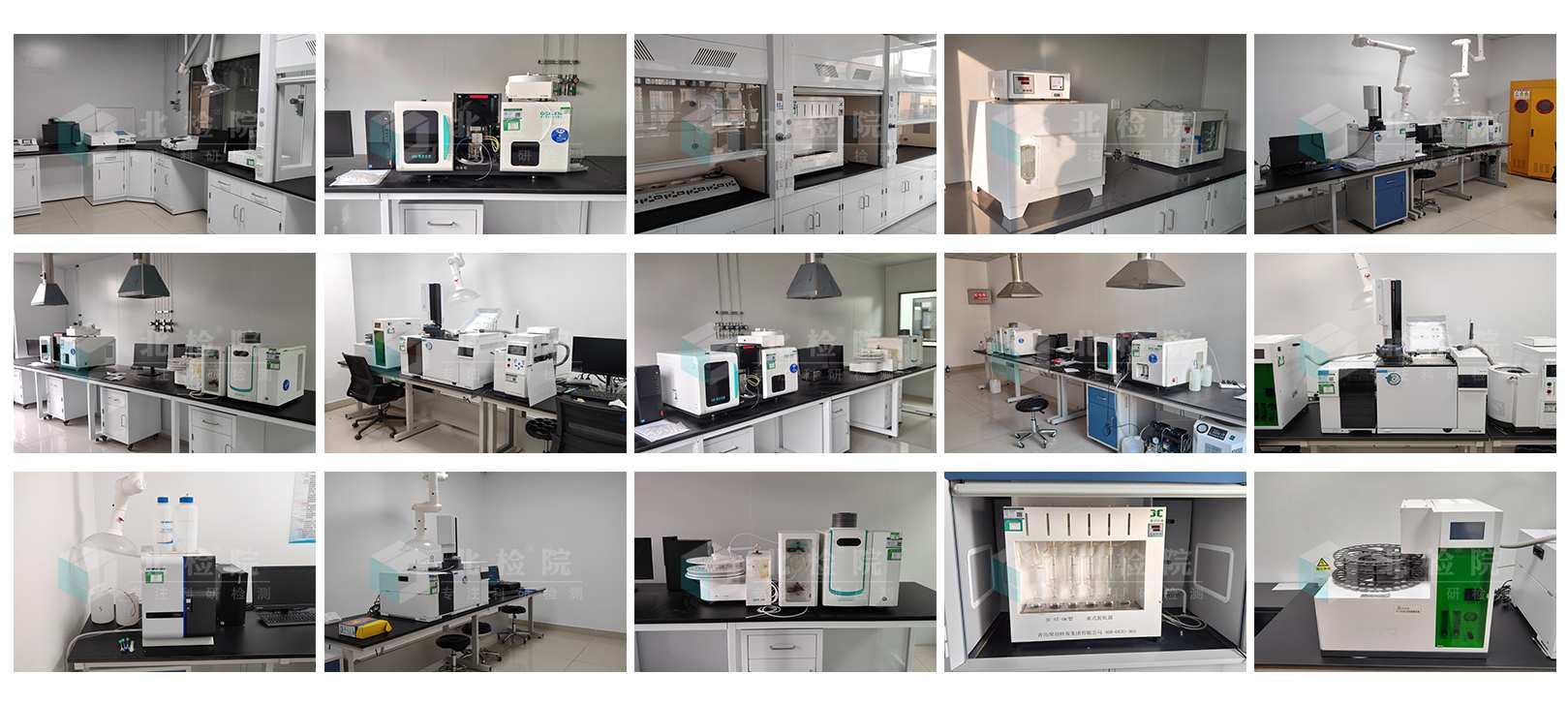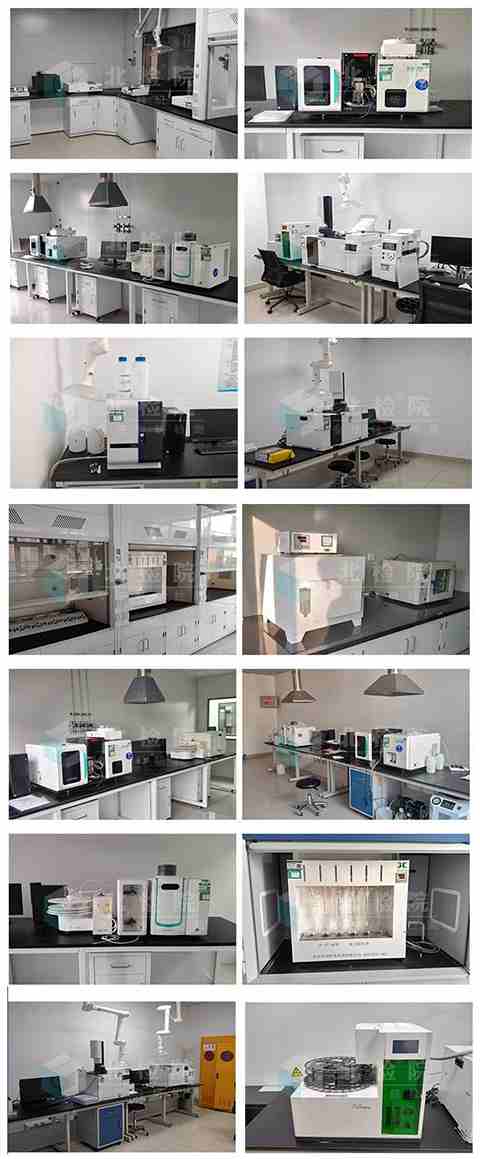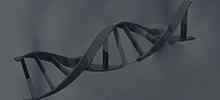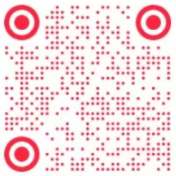国际标准 IEC 60794-5-20-2014 光缆--第5-20部分:族规范--用吹安装的户外微管道光纤装置、微管道和防护性微管道
【适用范围】This part of IEC 60794 is a family specification that covers outdoor microduct fibre units andcorresponding microducts and protected microducts for installation by blowing. The protectedmicroducts are intended for duct
directly buried or lashed applications.Microduct fibre units differ from microduct optical fibre cables (see IEC 60794-5-10) in thatthey provide less protection to the fibres that they contain. Specifically
microduct fibre unitsrely on the structure of the microduct
protected microduct or appropriate housing to supportinstallation and to provide additional mechanical protection for the optical fibre over thelifetime of the product.Systems built with components covered by this standard are subject to the requirements ofsectional specification IEC 60794-5 where applicable.Annex A gives examples of microduct optical fibre units and microducts.Annex B describes a blank detail specification for outdoor microduct fibre units and theassociated microducts and incorporates some minimum requirements. Detail productspecifications may be prepared on the basis of this family specification using Annex B as aguide. Annex C provides normative product constructions for microduct optical fibre units
microducts and protected microducts.The parameters specified in this standard may be affected by measurement uncertaintyarising either from measurement errors or calibration errors due to lack of suitable standards.Acceptance criteria should be interpreted with respect to this consideration.The number of fibres tested is intended to be representative of the microduct fibre unit designand should be agreed between the customer and supplier.
【中国标准分类】 Y56 通信设备
【国际标准分类】 97.200.40-游戏场
国外标准 ASTM F1446-2006 用于评定防护性头盔性能的设备和程序的试验方法
【适用范围】
【中国标准分类】 C73 劳动安全技术
【国际标准分类】 13.340.20-头部防护设备
国外标准 ASTM F1446-2011a 用于评定防护性头盔性能的设备和程序的试验方法
【适用范围】1.1 These test methods cover laboratory equipment
procedures
and basic requirements pertinent to testing protective headgear. Deviations or additions
or both
to these test methods will be specified
as required
in individual ASTM performance standards. 1.2 Requirements—The protective headgear is to be tested under specified environmental conditions for the following: 1.2.1 Impact attenuation (the limiting of head acceleration) of the protective headgear
and 1.2.2 Strength and stability of the retention system and its attachment to the protective headgear. 1.2.3 Special tests for particular protective headgear uses will be specified in the individual performance standards to be used in conjunction with these test methods. 1.3 This standard does not purport to address all of the safety concerns
if any
associated with its use. It is the responsibility of the user of this standard to establish appropriate safety and health practices and determine the applicability of regulatory limitations prior to use.
【中国标准分类】 C73 劳动安全技术
【国际标准分类】 13.340.20-头部防护设备
国外标准 ASTM F1446-2013 用于评定防护性头盔性能的设备和程序的试验方法
【适用范围】
The purpose of these test methods is to provide reliable and repeatable tests for the evaluation of various types of protective headgear. Use of these test methods in conjunction with the specific individual performance standards is intended to reduce the likelihood of serious injury and death resulting from impacts to the head sustained by individuals participating in sports
recreation
and other leisure activities in which protective headgear is worn.
1.1 These test methods cover laboratory equipment
procedures
and basic requirements pertinent to testing protective headgear. Deviations or additions
or both
to these test methods will be specified
as required
in individual ASTM performance standards.
1.2 Requirements8212;The protective headgear is to be tested under specified environmental conditions for the following:
1.2.1 Impact attenuation (the limiting of head acceleration) of the protective headgear
and
1.2.2 Strength and stability of the retention system and its attachment to the protective headgear.
1.2.3 Special tests for particular protective headgear uses will be specified in the individual performance standards to be used in conjunction with these test methods.
1.3 This standard does not purport to address all of the safety concerns
if any
associated with its use. It is the responsibility of the user of this standard to establish appropriate safety and health practices and determine the applicability of regulatory limitations prior to use.
【中国标准分类】 C73 劳动安全技术
【国际标准分类】 13.340.20-头部防护设备
国外标准 ASTM D4538-1995 有关发电设备防护性涂层和加衬里工作的术语
【适用范围】
【中国标准分类】 C73 发电用动力设备
【国际标准分类】 13.340.20-头部防护设备
国外标准 ASTM F1446-2015a 用于评定防护性头盔性能的设备和程序的试验方法
【适用范围】1.1 These test methods cover laboratory equipment
procedures
and basic requirements pertinent to testing protective headgear. Deviations or additions
or both
to these test methods will be specified
as required
in individual ASTM performance standards. 1.2 Requirements—The protective headgear is to be tested under specified environmental conditions for the following: 1.2.1 Impact attenuation (the limiting of head acceleration) of the protective headgear
and 1.2.2 Strength and stability of the retention system and its attachment to the protective headgear. 1.2.3 Special tests for particular protective headgear uses will be specified in the individual performance standards to be used in conjunction with these test methods. 1.3 This standard does not purport to address all of the safety concerns
if any
associated with its use. It is the responsibility of the user of this standard to establish appropriate safety and health practices and determine the applicability of regulatory limitations prior to use.
【中国标准分类】 C73 劳动安全技术
【国际标准分类】 13.340.20-头部防护设备
国外标准 ASTM F2439-2017 足球防护性头盔规格
【适用范围】1.1 This specification defines performance requirements for headgear used for participation in the sport of soccer. The technical requirements in this specification do not address the administrative requirements of soccer governing bodies
so it should not be assumed that any headgear satisfying this specification will be acceptable for use in sanctioned soccer events. 1.2 This specification is intended to reduce the forces from external physical sources reaching the defined impact area of the head in impacts that may occur in the sport of soccer. No headgear can provide protection against all impacts
foreseeable or not. This specification does not address the potential for injury from any type of impact. The tests specified in this specification are laboratory simulation tests only
and do not purport to create situations identical to the impacts that may occur during the playing of soccer. 1.3 All testing and requirements of this specification shall be in accordance with Test Methods F1446
except where noted herein. In the event of a discrepancy between the requirements of this specification and those of Test Methods F1446
this specification shall prevail. 1.4 Partial utilization of this specification is prohibited. Any statement of compliance with this specification shall be a certification that the headgear meets all of the requirements of this specification in its entirety. Headgear that fails to meet any one of the requirements of this specification is considered to have failed the specification and should not be sold with any indication that it meets parts of the specification. 1.5 The values stated in SI units are to be regarded as the standard. 1.6 This standard does not purport to address all of the safety concerns
if any
associated with its use. It is the responsibility of the user of this standard to establish appropriate safety
health
and environmental practices and determine the applicability of reg
【中国标准分类】 Y56 文教、体育、娱乐用品
【国际标准分类】 13.340.20-头部防护设备
国外标准 ASTM F2439-2017e1 足球防护性头盔规格
【适用范围】1.1 This specification defines performance requirements for headgear used for participation in the sport of soccer. The technical requirements in this specification do not address the administrative requirements of soccer governing bodies
so it should not be assumed that any headgear satisfying this specification will be acceptable for use in sanctioned soccer events. 1.2 This specification is intended to reduce the forces from external physical sources reaching the defined impact area of the head in impacts that may occur in the sport of soccer. No headgear can provide protection against all impacts
foreseeable or not. This specification does not address the potential for injury from any type of impact. The tests specified in this specification are laboratory simulation tests only
and do not purport to create situations identical to the impacts that may occur during the playing of soccer. 1.3 All testing and requirements of this specification shall be in accordance with Test Methods F1446
except where noted herein. In the event of a discrepancy between the requirements of this specification and those of Test Methods F1446
this specification shall prevail. 1.4 Partial utilization of this specification is prohibited. Any statement of compliance with this specification shall be a certification that the headgear meets all of the requirements of this specification in its entirety. Headgear that fails to meet any one of the requirements of this specification is considered to have failed the specification and should not be sold with any indication that it meets parts of the specification. 1.5 The values stated in SI units are to be regarded as the standard. 1.6 This standard does not purport to address all of the safety concerns
if any
associated with its use. It is the responsibility of the user of this standard to establish appropriate safety
health
and environmental practices and determine the applicability of reg
【中国标准分类】 Y56 文教、体育、娱乐用品
【国际标准分类】 13.340.20-头部防护设备
国外标准 ASTM C1564-2015 防护性玻璃窗系统用硅密封材料的使用指南
【适用范围】1.1 This guide covers the use of silicone sealants in protective glazing systems for building construction. Protective glazing includes systems designed for use in applications subject to natural disasters such as hurricanes
earthquakes
windstorms and forms of forced entry such as blasts
burglary
and ballistic attack. 1.2 While other glazing accessories and components are used in protective glazing
this document specifically describes the use of silicone sealants for protective glazing systems. 1.3 This guide provides information useful to design professionals
architects
manufacturers
installers
and others for the design and installation of silicone sealants for protective glazing systems. 1.4 A silicone sealant is only one component of a glazing system. A glazing system that meets the testing and code requirement for impact glazing must successfully integrate the frame and its anchorage
glass
or other glazing materials
protective film or interlayer and silicone sealant into a high performance system. Compliance with code or other requirements can be determined through physical testing of the glazing system or through computer simulation. 1.5 Glazing systems using silicone sealants that have successfully met the test requirements for missile impact and bomb blast test requirements incorporate the use of silicone sealants specifically formulated
tested
and marketed for this application. Sealants that are commonly used today comply with Specifications C920 and C1184. 1.6 This guide does not discuss sealants intended to protect against radioactivity or provide biological containment. 1.7 The committee with jurisdiction over this standard is not aware of any comparable standards published by other organizations. 1.8 This standard does not purport to address all of the safety concerns
if any
associated with its use. It is the responsibility of the user of this standard to establish appropriate
【中国标准分类】 Q24 建材产品
【国际标准分类】 71.100.55-硅树脂
国外标准 ASTM D4538-2015 有关发电设备防护性涂层和衬砌支护的术语
【适用范围】1.1 This terminology covers terms and their definitions relevant to the use of protective coatings in nuclear power plants.
【中国标准分类】 K59 发电用动力设备
【国际标准分类】 01.040.27-能源和热传导工程 (词汇)
国外标准 ASTM D4538-2013 防护性玻璃窗系统用硅密封材料的使用指南
【适用范围】
Guidelines are provided for the use of silicone sealants in protective glazing. Protective glazing incorporates various forms of glazing that are not covered in Guides C 1401 and C 1193. The requirements for a sealant in protective glazing are similar to the requirements for structural sealant glazing but for certain applications such as missile impact and bomb blast glazing
sealant requirements may be greater. Modes of failure for bomb blast glazing can be different than the modes of failure for missile impact glazing.
Many types of protective glazing systems are relatively new and the test methods and standards for protective glazing are continually evolving. Because the demands on a sealant in protective glazing systems are changing
guidelines are necessarily general in many instances.
As a component of a glazing system
the sealant can be a factor in whether a glazing system meets the requirements of a specific test method but other factors such as the frame and glass type may be of greater influence.
The designer of a protective glazing system should consult with the various manufacturers of the component materials. The experience and judgment of the glazing system designer working with the sealant manufacturer and other component manufacturers can ultimately determine whether a specific glazing system will successfully meet a specific test requirement.
1.1 This guide covers the use of silicone sealants in protective glazing systems for building construction. Protective glazing includes systems designed for use in applications subject to natural disasters such as hurricanes
earthquakes
windstorms and forms of forced entry such as blasts
burglary
and ballistic attack.
1.2 While other glazing accessories and components are used in protective glazing
this document specifically describes the use of silicone sealants for protective glazing systems.
1.3 This guide provides information useful to design professionals
architects
manufacturers
installers
and others for the design and installation of silicone sealants for protective glazing systems.
1.4 A silicone sealant is only one component of a glazing system. A glazing system that meets the testing and code requirement for impact glazing must successfully integrate the frame and its anchorage
glass
or other glazing materials
protective film or interlayer and silicone sealant into a high performance system. Compliance with code or other requirements can be determined through physical testing of the glazing system or through computer simulation.
1.5 Glazing systems using silicone sealants that have successfully met the test requirements for missile impact and bomb blast test requirements incorporate the use of silicone sealants specifically formulated
tested
and marketed for this application. Sealants that are commonly used today comply with Specifications C 920 and C 1184.
1.6 This guide does not discuss sealants intended to protect against radioactivity or provide biological containment.
1.7 The committee with jurisdiction over this standard is not aware of any comparable standards published by other organizations.
1.8 This standard does not purport to address all of the safety concerns
if any
associated with its use. It is the responsibility of the user of this standard to establish appropriate safety and health practices and determine the applicability of regulatory requirements prior to use.
【中国标准分类】 Q24 建材产品
【国际标准分类】 71.100.55-硅树脂
国外标准 ASTM F1446-2015b 用于评定防护性头盔性能的设备和程序的试验方法
【适用范围】1.1 These test methods cover laboratory equipment
procedures
and basic requirements pertinent to testing protective headgear. Deviations or additions
or both
to these test methods will be specified
as required
in individual ASTM performance standards. 1.2 Requirements—The protective headgear is to be tested under specified environmental conditions for the following: 1.2.1 Impact attenuation (the limiting of head acceleration) of the protective headgear
and 1.2.2 Strength and stability of the retention system and its attachment to the protective headgear. 1.2.3 Special tests for particular protective headgear uses will be specified in the individual performance standards to be used in conjunction with these test methods. 1.3 This standard does not purport to address all of the safety concerns
if any
associated with its use. It is the responsibility of the user of this standard to establish appropriate safety and health practices and determine the applicability of regulatory limitations prior to use.
【中国标准分类】 C73 劳动安全技术
【国际标准分类】 13.340.20-头部防护设备
国外标准 DIN ETS 300019-1-4/A1-1998 设备工程学.电信设备环境条件和环境试验.第1-4部分:环境条件分类.非气候防护性固定设备.修改件1
【适用范围】The subclause 5.6
earthquake conditions
has be added.
【中国标准分类】 M30 通信设备
【国际标准分类】 33.050.01-电信终端设备综合
国外标准 ANSI/AWWA C550-2005 阀门和给水栓用防护性内部涂层
【适用范围】This standard describes the special protective interior coatings for valves and hydrants used for water supply service. The standard describes the material
application
and performance requirements for these special interior coatings. The coating shall be either a liquid or powder system and shall not contain coal tar. These coating are applied to interior ferrous surfaces of valves and hydrants where corrosion protection is specified.
【中国标准分类】 J16 通用零部件
【国际标准分类】 23.060.01-阀门综合
国家标准 GB/T 9797-2022 金属及其他无机覆盖层 镍、镍+铬、铜+镍和铜+镍+铬电镀层
【适用范围】本文件规定了钢铁、锌及锌合金、铜及铜合金以及铝及铝合金上装饰性的镍、镍+铬、铜+镍和铜+镍+铬电镀层的要求,该镀层用来提供美丽外观和增强防护性。本文件还规定了不同厚度和种类镀层的标识,并提供了电镀件暴露于对应服役环境下镀层级别的选择指南。
本文件未规定电镀前基体金属的表面状态。
本文件适用于钢铁、锌及锌合金、铜及铜合金以及铝及铝合金上装饰性的镍、镍+铬、铜+镍和铜+镍+铬电镀层。
本文件不适用于未加工成形的薄板、带材、线材的电镀,也不适用于螺纹紧固件或螺旋弹簧的电镀。
GB/T 12600规定了塑料上铜+镍+铬电镀层的要求。GB/T 12332和GB/T 11379分别规定了工程用镍和工程用铬电镀层的要求。
【中国标准分类】 A29 基础标准
【国际标准分类】 25.220.40-金属镀层
国家标准 GB/T 9798-2005 金属覆盖层 镍电沉积层
【适用范围】 本标准规定了在钢铁、锌合金、铜和铜合金、铝和铝合金上装饰性和防护性镍电沉积层的要求,以及在钢铁、锌合金上铜-镍电镀层的要求。给出了不同厚度和种类镀层的标识,以及镀件暴露于相应服役条件下镀层选择的指南。 本标准未规定电镀前基体金属的表面状态,本标准不适用于未加工成形的板材、带材、线材上的镀层,也不适用于螺纹紧固件或密圈弹簧上的镀层。 GB/T 9797规定了金属基件上镍+铬、铜+镍+铬电镀层的要求。GB/T 12600规定了塑料上镍+铬、铜+镍+铬电镀层的要求。GB/T 12332和GB/T 11379分别规定了工程用镍、铬电镀层的要求。
【中国标准分类】 A29 基础标准
【国际标准分类】 25.220.40-金属镀层
国家标准 GB 20816-2006 车辆防盗报警系统 乘用车
【适用范围】本标准规定了安装在乘用车(除驾驶员座位外不多于8座,即M1类车辆)上的车辆防盗报W系统 的技术要求和试验方法。
本标准的目的是确保车辆防盗报警系统具备高的安全性、防护性和可靠性,以及减少误报警。
本标准适用于在设置警戒状态下对未经许可打开任何车门、行李厢门、前盖或发动机仓盖的行为实 施探测、发出报警信号并能止动车辆的报警系统。
本标准既适用于作为车辆原装设备的车辆防盗报警系统,也适用于交付车辆后安装的车辆防盗报 警系统。
【中国标准分类】 A91 社会公共安全
【国际标准分类】 13.310-犯罪行为防范
国家标准 GB/T 26108-2010 三价铬电镀 技术条件
【适用范围】本标准规定了三价铬电镀溶液的试验方法和三价铬镀层技术要求.还规定了三价铬电镀溶液中三价铬的检测方法和六价铬的验证方法。本标准适用于装饰防护性铜+镍十铬和镍+铬电镀层用三价铬电镀铬组合镀层。注;从环境的因素考虑.六价铬是对环境有高强度污染的价态,人或动物吸收六价铬,非常难以代谢.三价铬影响则较小,工艺淤渣少.用三价格替代六价铬电镀可以减少对环境的危害。
【中国标准分类】 A29 基础标准
【国际标准分类】 25.220.40-金属镀层
国家标准 GB/T 39685-2020 陶瓷覆层结合强度试验方法
【适用范围】本标准规定了一种常温下通过在十字粘合试样上加载以检测陶瓷覆层结合强度的试验方法,并对试样的制备、试验模式、加载速率、数据采集、试验报告等进行了规范。
本标准适用于涂覆于各种材料表面的陶瓷覆层。其他各种功能性、防护性、标志性、装饰性等的覆层材料也可参考使用。
【中国标准分类】 Q32 陶瓷、玻璃
【国际标准分类】 81.060.30-高级陶瓷
行业标准 DL/T 1114-2009 钢结构腐蚀防护热喷涂(锌、铝及合金涂层)及其试验方法
【适用范围】本标准规定了防腐蚀用热喷涂锌、铝及其合金涂层的选择、应用于试验方法。本标准适用于钢结构防护性热喷涂。
【中国标准分类】 F24 电力
【国际标准分类】 27.100-电站综合
行业标准 JB/T 12857-2016 无六价铬电镀装饰镀层工艺规范
【适用范围】本标准规定了用于装饰防护性电镀三价铬、锡钴锌合金和锡钻合金的工艺要求、质量控制及质量要求。
本标准适用于装饰防护性铜+镍+铬和镍+铬组合镀层中,用三价铬、锡钻锌合金和锡钻合金镀层替代六价镀层。
注:该镀层部分替代装饰性六价铬镀层。
【中国标准分类】 A29 基础标准
【国际标准分类】 25.220.40-金属镀层
行业标准 QB/T 1572-1992 缝纫机零件 电镀通用技术条件
【适用范围】本标准规定了缝纫机零件进行电镀处理的铬、镍、锌表面镀层的标注、分类、选用依据、技术要求、试验方法。本标准适用于作为防护性、装饰性的金属基体的缝纫机电镀零件(以下简称“镀件”),其他镀层、镀种和(或)工程性电镀的被件,亦应参照便用。
【中国标准分类】 B71 钟表、自行车、缝纫机
【国际标准分类】 71.100.50-木材防护化学药品
国外标准 SAE AMS 2475F-2001 镁合金的防护性处理
【适用范围】
【中国标准分类】 K04 材料与工艺
【国际标准分类】 19.040-环境试验
国家标准 GB/T 2703-2008 鞋类 术语
【适用范围】本标准规定了制鞋行业中使用的鞋类部件、名称、基础、材料、检测、工艺、设备、鞋楦的术语和定义。本标准适用于缝制、胶粘、模压、硫化、注塑、插帮、灌注等工艺及粘缝等两种(含)以上工艺结合,采用各种天然皮革、人造革、合成革、纺织品等材料及两种(含)以上材料作为帮面制成的鞋类。
【中国标准分类】 Y78 服装、鞋、帽与其他缝制品
【国际标准分类】 61.060-鞋袜
国家标准 GB 2890-2022 呼吸防护 自吸过滤式防毒面具
【适用范围】本文件规定了自吸过滤式防毒面具的分类及标记、技术要求、标识、包装和制造商提供的信息,描述了试验方法。
本文件适用于基于自吸过滤原理的防毒面具。
本文件不适用于缺氧环境、水下作业、逃生和消防热区用自吸过滤式防毒面具。
【中国标准分类】 C73 劳动安全技术
【国际标准分类】 13.340.30-呼吸保护装置
国家标准 GB/T 2900.1-2008 电工术语 基本术语
【适用范围】本部分规定了电工术语中的基本术语。本部分适用于标准制修订、编制技术文件、编写和翻译 技术资料及教材或书刊,供从事电工 工作的科研、设计、生产、使用、教学及出版等有关部门的人员使用。
【中国标准分类】 K04 电工综合
【国际标准分类】 01.040.29-电气工程 (词汇)
国家标准 GB/T 3138-1995 金属镀覆和化学处理与有关过程术语
【适用范围】 本标准规定了电镀、化学镀、化学处理、电化学处理和与其有关过程的术语的定义。 本标准适用于电镀、化学镀、化学处理、电化学处理与有关过程中所用术语。
【中国标准分类】 A29 基础标准
【国际标准分类】 25.220.20-表面处理
国家标准 GB 3883.1-2008 包装术语 防护
【适用范围】
【中国标准分类】 A80 标志、包装、运输、贮存
【国际标准分类】 55.020-货物的包装和调运综合
国家标准 GB 4706.1-2005 家用和类似用途电器的安全 第1部分:通用要求
【适用范围】本部分涉及单相器具额定电压不超过250V
其他器具额定电压不超过480V的家用和类似用途电器的安全。
不作为一般家用,但对公众仍可能引起危险的器具,例如打算在商店、轻工业和农场中由非 的人员使用的器具也属于本部分的范围。
就实际情况而言,本部分所涉及的各种器具存在普通危险,是在住宅和住宅周围环境中所有的人可能会遇到的。
然而,一般说来本部分并未涉及:
——无人照看的幼儿和残疾人使用器具时的危险;
——幼儿玩耍器具的情况。
注2:注意下述情况:
——对于打算用在车辆、船舶或航空器上的器具,可能需要附加要求。
——在许多国家中,全国性的卫生保健部门、全国性劳动保护部门、全国性供水管理部门以及类似的部门都对器具规定了附加要求。
注3:本部分不适用于:
——专为工业用途而设计的器具;
——打算使用在经常产生腐蚀性或爆炸性气体(如灰尘、蒸气或瓦斯气体)特殊环境场所的器具;
——音频、视频和类似电子设备(GB 8898);
——医用电气设备(GB 9706.1);
——手持式电动工具(GB 3883.1);
——信息技术设备(GB 4943);
——可移动式电动工具(GB 13960)。
【中国标准分类】 K09 电工综合
【国际标准分类】 13.120-家用品安全
国家标准 GB 4793.8-2008 测量、控制和实验室用电气设备的安全要求 第2-042部分:使用有毒气体处理医用材料及供实验室用的压力灭菌器和灭菌器的专用要求
【适用范围】本标准适用于包括带自动装载和卸载系统的压力灭菌器和灭菌器,它们有一个使用有毒气体的灭菌室
用于处理医用材料及供实验室处理使用,比如用于灭菌。
如果压力灭菌器在同一装置内安装有用于加湿的蒸汽发生器,则本标准规定的适用安全要求,也同样适用于蒸汽发生器。
【中国标准分类】 C47 医药器械
【国际标准分类】 11.080.10-消毒设备
国家标准 GB/T 6579-2007 实验室玻璃仪器 热冲击和热冲击强度试验方法
【适用范围】本标准规定了测定实验室玻璃仪器耐热冲击和热冲击强度的试验方法和步骤。本标准不适用于石英玻璃仪器和钠钙玻璃容器。钠钙玻璃容器的热冲击试验方法依据GB/T 4547。
【中国标准分类】 N64 实验室仪器与真空仪器
【国际标准分类】 81.040.01-玻璃综合
国家标准 GB 6932-2015 家用燃气快速热水器
【适用范围】本标准规定了家用燃气快速热水器的术语和定义、分类及型号、材料及结构要求、性能要求、试验方 法、检验规则和标志、安装、包装、运输、贮存。
本标准适用于额定热负荷不大于70kW的家用供热水燃气快速热水器以下简称供热水热水器); 额定热负荷不大于70kW,最大供暖工作水压不大于0.3MPa、供暖水温不大于 95℃的室内型强制给 排气式、室外型家用供暖燃气快速热水器(以下简称供暖热水器)和家用两用型燃气快速热水器(以下简称两用热水器),包括冷凝式的供热水热水器、供暖热水器和两用热水器的特殊要求。
本标准不适用于燃气容积式热水器。
注 1 :本标准所指燃气,是GB/T 13611《城镇燃气分类和基本特性、GB 13612《人工煤气》规定的燃气,使用GB/T1 3611规定以外的燃气时,试验用燃气按产品设计提供的气进行,压力范围参照GB T 13611的有关规定。
注2 家用供热水燃气快速热水器、家用供暖燃气快速热水器、家用两用型燃气快速热水器统称为家用燃气快速热水器(以称热水器)。
【中国标准分类】 Y69 家用电器、日用机具
【国际标准分类】 97.120-家用自动控制装置
国家标准 GB/T 7932-2017 气动 对系统及其元件的一般规则和安全要求
【适用范围】本标准规定了气动系统及元件的一般规则和安全要求。它涉及与气动系统相关的各种重大危险,并规定了使用该系统时避免这些危险的规则。
注1:见第4章和附录A。
本标准中提及的有关噪声危害是不完全的。
注2:噪声的传播主要取决于机器设备中气动元件或系统的安装情况。
本标准适用于设计、制造和调整系统及其元件,还应重视下列几个方面:
a)集成;
b)安装;
c)改进;
d)系统的连续运行;
e)维护、清理的难易和经济性;
f)整个预期使用期能可靠地工作;
g)能源效率;
h)环境。
本标准不适用于工厂中的空气压缩机及与配气系统连接的典型装置,包括气瓶和气罐。
【中国标准分类】 J20 通用零部件
【国际标准分类】 23.100.01-流体动力系统综合

























